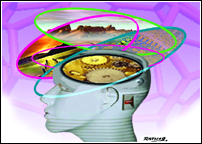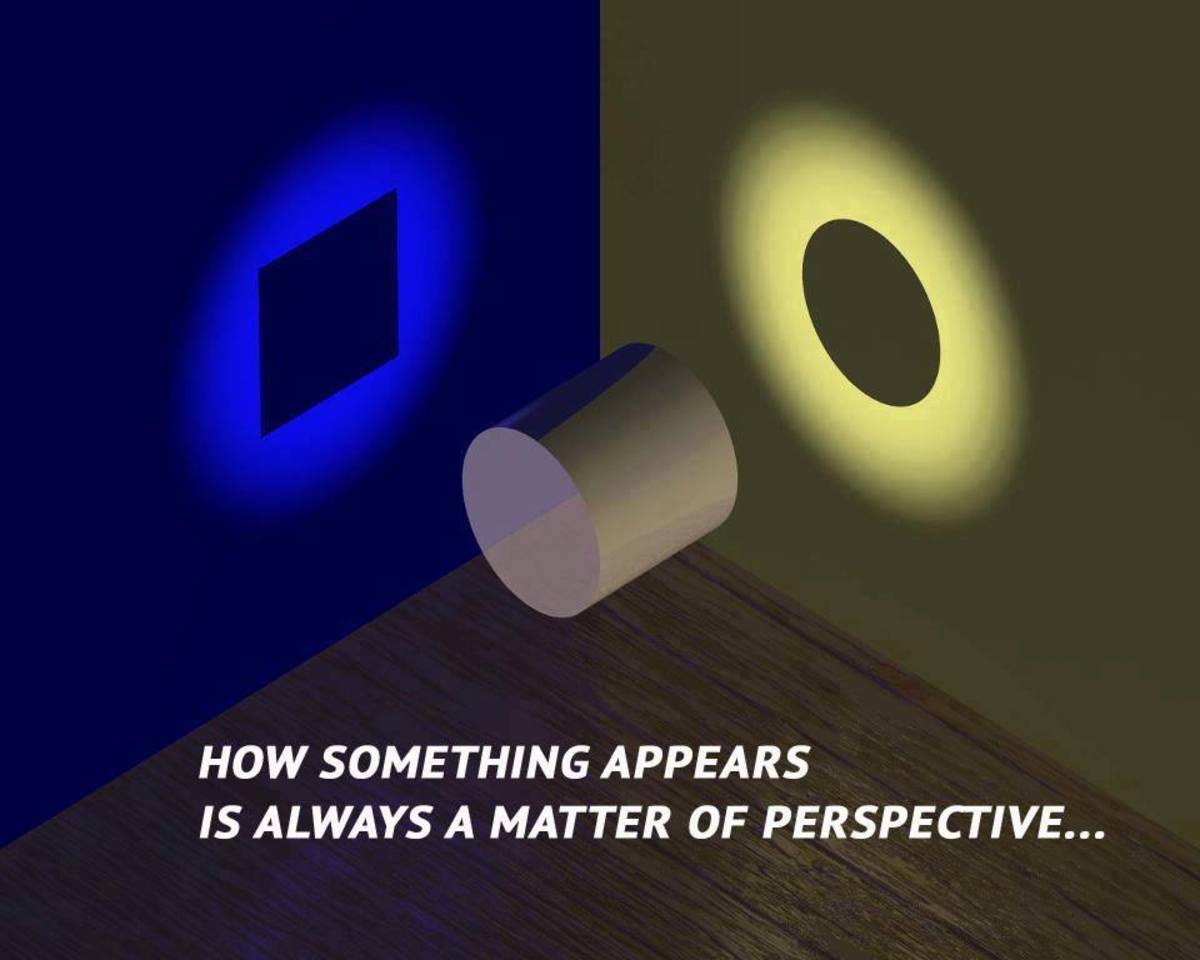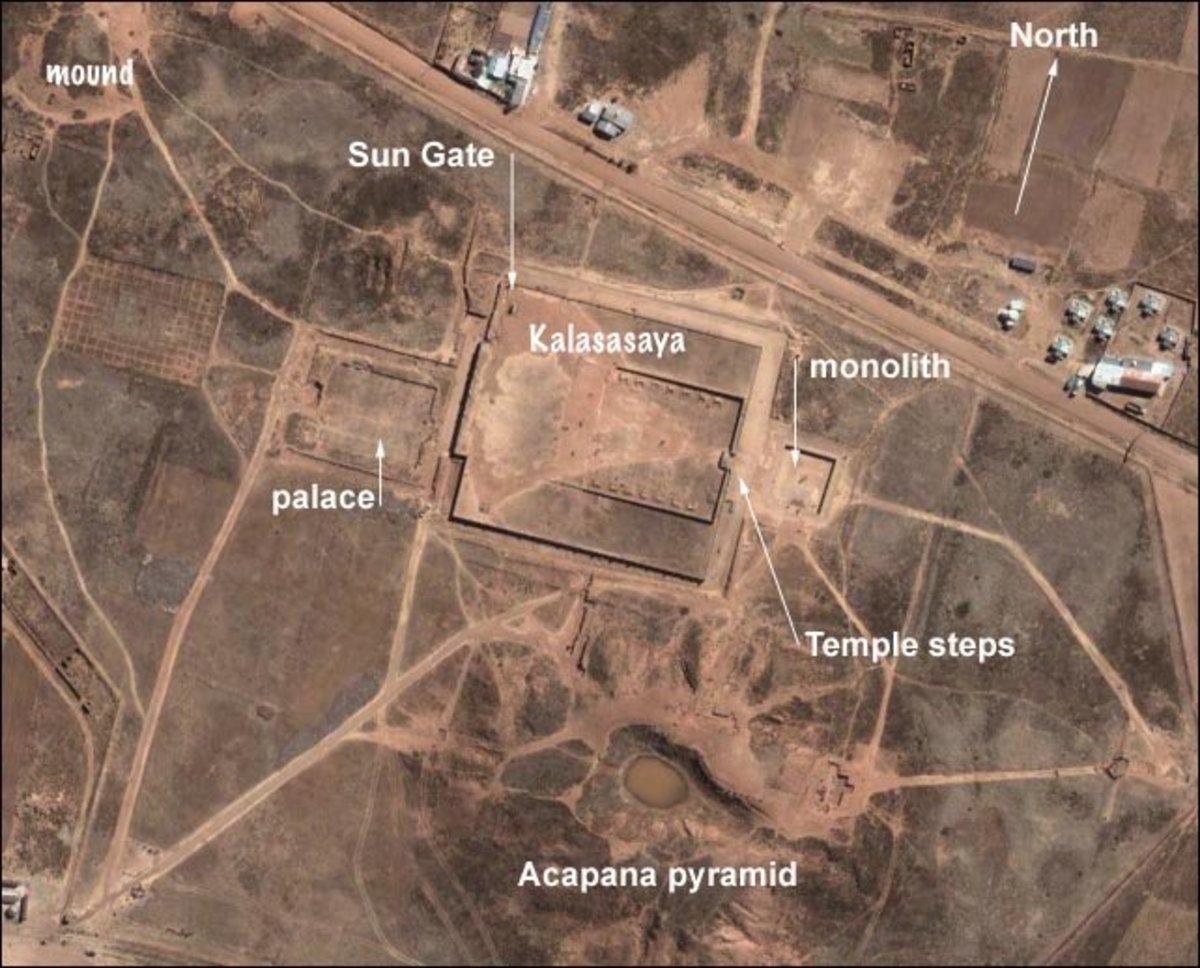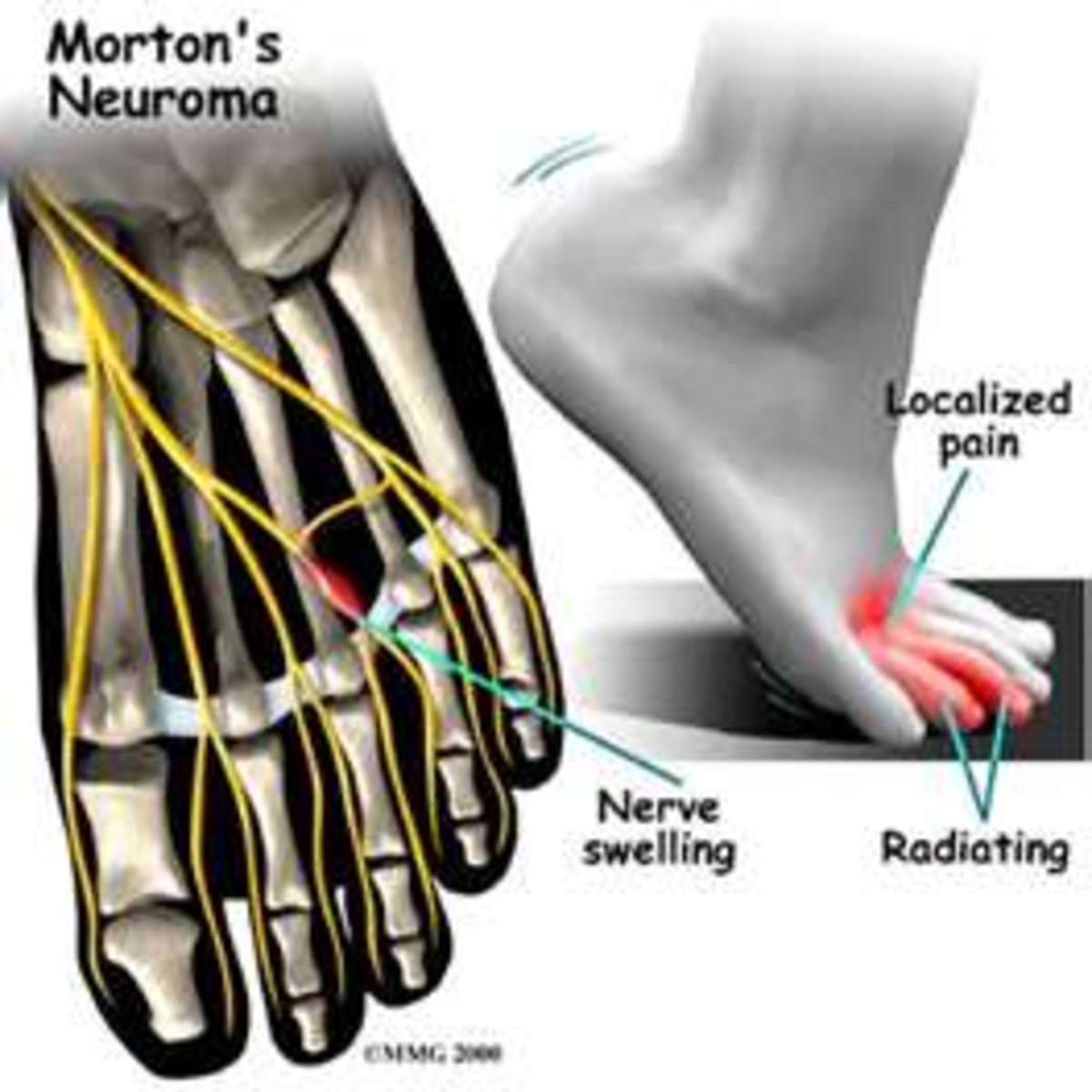Mysteries Of The Brain

Rene Descartes was a 17th century Frenchman, possibly the last of the truly great Renaissance men, who left an indelible mark on the history of ideas. Among other things, he became known for a method of inquiry based on skepticism in which the nature of phenomena was deduced by means of systematic doubt (Cartesian method of doubt). One of Descartes' most famous pronouncements, precisely the result of this powerful method of doubt, was "Cogito, ergo sum". (I think, therefore I am.)
It's a remarkable insight and it cuts to the heart of the ageless debate about the mind and the brain. The argument goes something like this, Descartes wondered whether our sensory experiences are real or imagined, and if in fact there is even a way to tell the difference. Who's to say, he conjectured, if what we see, hear and feel is not the result of a mischievous sorcerer cleverly manipulating our brains? Could it be possible that our brains are merely sitting in a vat of fluid and the sum-total of ourself is nothing but the result of some knowledgeable being tinkering with it to generate the appropriate sensations - visual, tactile, auditory, and others - that account for all our experiences?
In a tremendous flourish of incisive logic, Descartes concluded that this could not be so. The reason? We are self-aware, we can think. In other words, Descartes reasoned that even the cleverest brain tinkerer would not be able to convince us of the fact of our own existence if, in fact, we didn't exist. We know we exist because we can think. In a nutshell, consciousness is the key.
Which brings us to the crux of the problem that many scholars consider the ultimate question of all: the basis of consciousness. Over the history of human thought, this question has been phrased in many different ways, but the search has always been for the same holy grail: what makes us what we are, these conscious, self-aware beings who can think and exercise their own will?
For the last few centuries, we have known that the answer lies somewhere in the brain, but where exactly and in what form remains speculative. Even the localization of consciousness to the brain was not automatic. The Greeks, for all purposes the founders of formal scholarship, had clear ideas about the brain but they got it horribly wrong. Aristotle (384-322BC), for example, believed that the purpose of the brain was to cool the blood.
Over a thousand years later, in the days of revolutionary medical scholarship in Islamic lands, the conceptual error persisted unchecked. Hakim Ibne-Sina (AD980-1037) is, by most accounts, the ultimate physician from the first half of modern history and the philosophical successor to Aristotle. He had his own version of "Cogito, ergo sum", predating Descartes' self-conscious conclusion by a few hundred years. Our self-awareness, observed Ibne-Sina in Kitab al-isharat wa at-tanbihat (Book of Directives and Remarks), proves the fact of our existence. A deceptively simple argument, yet, one on which modern cognitive science ultimately rests. But Ibne-Sina, too, failed to recognize the brain as the seat of all mental activities. He did believe that certain functions like movement and vision were located in the brain, but he invoked the heart as the seat of emotive and passionate thought, ascribing to the heart a central role in the fabrication of human self-awareness.
We now know, of course, that being little more than a thick muscle built to pump blood, the heart plays no role in how we think, sense and feel. However, especially in our culture where modern day hikmat remains grounded in the principles expounded by Ibne-Sina, the heart continues to have a special place in matters of consciousness. The heart has no capacity to generate conscious experience, but the image remains hard to shake.
Closely linked to the idea of consciousness being at least partly resident in the heart, is the idea of a ‘soul'. But if scientific reasoning has helped dispel the notion of a ‘sensory' heart, it has so far been unable to do any significant damage to the idea of a soul.
The issue is whether human consciousness is something entirely material, or whether it is some unique entity that exists independent of form and matter. Indeed, the idea of a soul unconfined by physical existence comes naturally to us. As humans, we are acutely aware that we are profoundly different from all other objects in the known universe, including other life forms, and this realization automatically provides us with fantastic beliefs about the nature of ourselves. We must, naturally, be something more than just the organic matter comprising our bodies, for after all, the argument would go, we are ‘conscious' and aware of ourselves. This concept of consciousness beyond matter is also consistent with the position articulated by classic monotheistic beliefs, which are rooted in the idea of an afterlife. Obviously, consciousness has to be independent of material existence if it is to transcend bodily death.
It is important to recognize that there has been nothing so far in our scientific discoveries of the brain that disproves the idea of a soul, yet, the suggestion is abhorrent to many scientists. The challenge comes from reductionism, the powerful scientific tradition that seeks to entirely explain all natural phenomena, including life and human thought, in terms of basic physics and chemistry.
The lure of reductionism is its past successes. Take life itself, for example. The principle of reductionism argues that like all natural phenomena, life too must have a mechanistic basis, i.e., it should be possible to completely explain life in physical terms. Over the last one hundred years, scientists have tried to find such an explanation by using experimental methods to reduce life to its most elementary constituents. This approach has yielded great dividends.
Thus, we now understand that all living things are made up of cells, which are microscopic chemical factories in which the business of life is carried out. The cells, in turn, are composed of biological chemicals such as nucleic acids and proteins, and the biological chemicals are themselves reducible to the various chemical elements familiar to us from the Periodic Table and which are known to occur naturally. This chain of reasoning reduces life to physics and chemistry, with the support of watertight experimental evidence. Understandably, many scientists feel this kind of approach will also help us unlock the deepest mysteries of the brain, the secrets of human consciousness.
To be sure, mechanistic approaches towards understanding the brain have taught us a great deal, but they stop well short of proposing any coherent theory about consciousness, certainly far short of any theory that could be put to any sort of experimental test.
The typical adult human brain weighs about three pounds, and comprises discrete structures with defined tasks and functions. At the base of the brain is a stalk called the brainstem that connects the brain to the spinal cord and, through it, to the rest of the body. The brainstem hosts many automatic functions, such as regulation of blood pressure and breathing, and it is also the passageway for all the major nerve tracts, neural pathways that allow us to translate thoughts into action and behaviour and allow sensations felt at the skin to be entered into conscious experience.
Sitting just behind the brainstem is a cauliflower-like appendage called the cerebellum. From studying human patients in whom the cerebellum has been damaged by disease, we have learnt that this region of the brain regulates movement and coordination.
As one proceeds upwards from the brainstem, the complexity of the brain increases. Sitting on top of the brainstem are the familiar cerebral hemispheres. These structures, with their convoluted ridges and deep surface grooves, are what most people tend to visualize when they think about the brain. Ascending upwards from the brainstem, the first portion of the cerebral hemispheres one encounters are the subcortical nuclei, including the basal ganglia and the thalamus. The term ‘subcortical' here indicates that these structures lie beneath the cerebral cortex, the outermost mantle of the cerebral hemispheres; and the term ‘nucleus' defines these bodies as a collection of brain cells formally organized into a distinct substructure within the brain. Among the subcortical nuclei, the thalamus acts as a major processing and relay station for sensory information coming from all parts of the body, while the basal ganglia act as a regulatory device that fine-tunes our complex movements to make sure they are executed smoothly.
None of the structures described thus far is a good candidate for being the seat of consciousness. Research studies indicate that neither the brainstem, nor the cerebellum, or subcortical nuclei have any formal role to play in complex human thinking.
So we keep looking. As one extends outwards from the subcortical nuclei, one runs into a thick mass of white matter, the so-called subcortical white matter, which is really a sea of coated wires connecting the cerebral cortex with the rest of the brain as well as with the spinal cord. The subcortical white matter contains no brain cells, only their interconnections. In contrast, the cerebral cortex, which occupies the outermost part of the cerebral hemispheres, is all grey matter, richly populated with billions and billions of brain cells. There are many reasons to believe that this is the part of the brain that somehow generates complex thought and self-awareness. If you compare the human brain to the brains of our closest living relatives in the animal kingdom, such as primates like the gorilla and the chimpanzee, the most astounding difference is in the cerebral cortex. Other brain structures like the brainstem, cerebellum and subcortical nuclei of man and non-human primates are very similar, but in humans the cerebral cortex is greatly expanded. It is this expansion of the cortical mantle that gives the human brain its signature furrows and thick, tortuous ridges on the outer surface. Moreover, damage to the cerebral cortex by disease or injury has profound effects on the content and process of higher-order thinking.
But, if the cerebral cortex is indeed where the human mind comes alive, how exactly does this happen? This is where the mystery deepens and beyond which modern science becomes impotent.
A powerful research strategy for studying the brain has been to reconstruct the way the brain receives and processes sensory information. Neuro-scientists have been very successful with this approach - but up to a point. Take the case of vision, probably the most well-studied sensory system for which David Hubel and Torston Wiesel of Harvard University received the Nobel Prize in 1981. Through painstaking research, Hubel and Wiesel were able to decipher how a visual image is captured by the eye and transmitted to the brain. Light stimulates certain cells in the retina, the sensory layer covering the back of the eye, with the pattern of stimulation defining the image. Encoded by electrical impulses from the organized firing of various brain cells in this pathway, the image is transmitted to the thalamus and from there, via the subcortical white matter, to a spot in the cerebral cortex known as the primary visual area.
Beyond this, the trail of this visual pathway becomes difficult to follow. To some extent, pieces of visual information can be detected in cortical areas surrounding the primary visual area (the so-called visual association areas), but beyond these regions the pathway just disappears into the thicket of the rest of the cerebral cortex. Somewhere past the visual association areas, the image enters conscious perception. And beyond that, in the far recesses of some utterly mysterious abyss somewhere resident in the cerebral cortex, lie cognitive qualities that the visual message has the potential to evoke: such phenomena as love and remorse, reflection and introspection, fear and friendship - the familiar elements of human thinking.
It is akin to following a road that leads into a jungle and losing the trail as it divides up again and again and runs deeper and deeper into an ever-thickening jungle.
Like the primary visual area, there are other well-defined sites in the cerebral cortex that are devoted to very specific functions, such as listening, sensing touch, generating movement and even using language. But, in every case, the pathways leading from these primary areas into consciousness become impossible to follow.
Since a physical basis for human consciousness remains elusive, a supernatural basis for consciousness is an open possibility. It must be acknowledged, though, that it also remains possible that at some future time scientific research does manage to provide a satisfactory mechanistic explanation for this phenomenon. Perhaps, the secret to the physical substrate of consciousness lies in something as tangible as a circuit diagram of the human cerebral cortex that gives a clear picture of how this structure is built up from its constituent brain cells. But with billions of brain cells connecting to each other in millions of ways within the layers of the cortex, even beginning to prepare such a diagram is pure fantasy, given the contemporary technology and resources. All we can say at the present time is that the issue is an imponderable.
Albert Einstein once said that there are only two kinds of people in the world, those to whom nothing is a miracle and those to whom everything is. To some of us the phenomenon of human consciousness, whether supernatural or whether simply the product of physics and chemistry, will always remain nothing short of a miracle.








